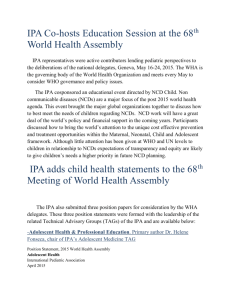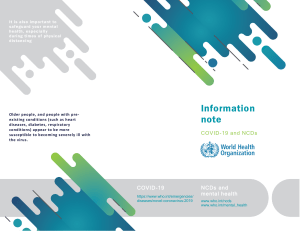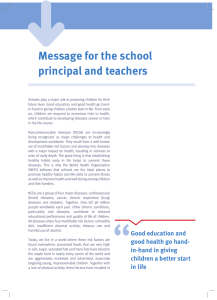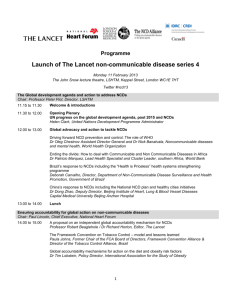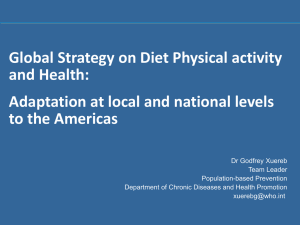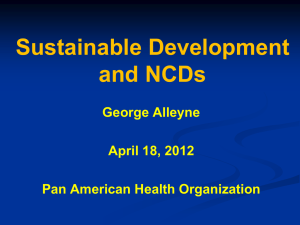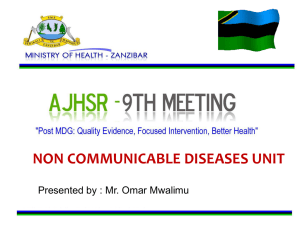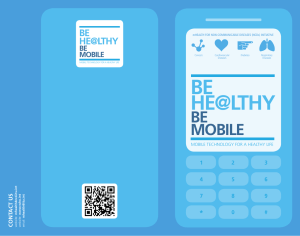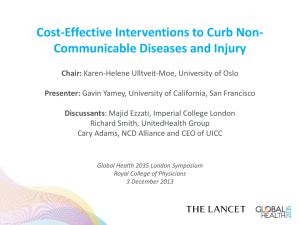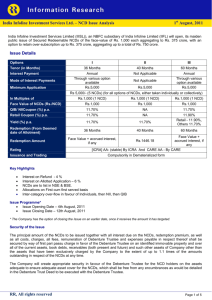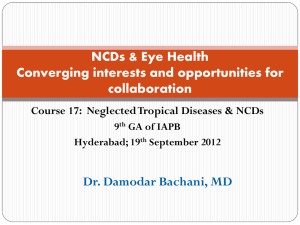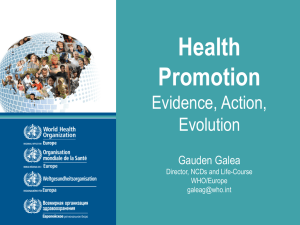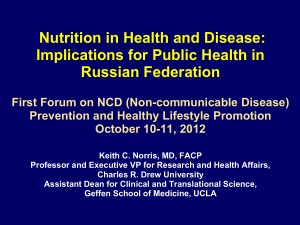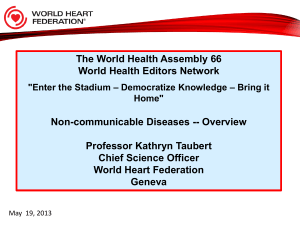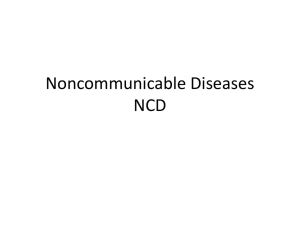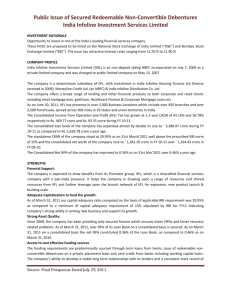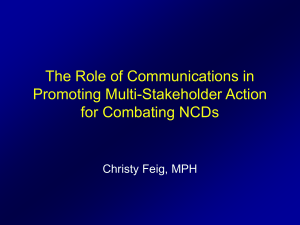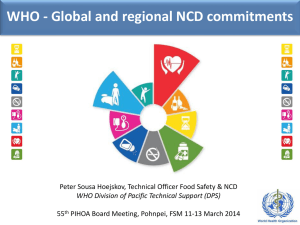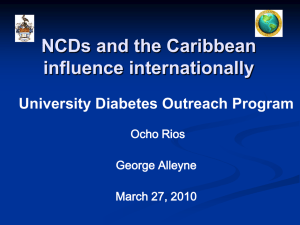position statement, 2015 world health assembly
advertisement
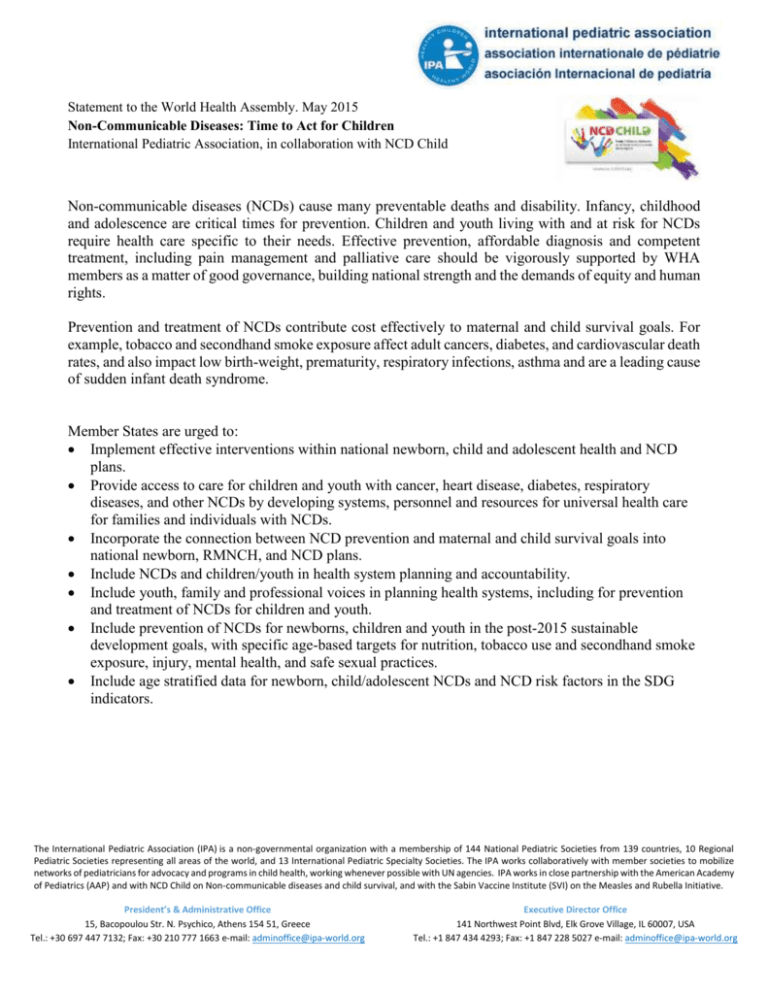
Statement to the World Health Assembly. May 2015 Non-Communicable Diseases: Time to Act for Children International Pediatric Association, in collaboration with NCD Child Non-communicable diseases (NCDs) cause many preventable deaths and disability. Infancy, childhood and adolescence are critical times for prevention. Children and youth living with and at risk for NCDs require health care specific to their needs. Effective prevention, affordable diagnosis and competent treatment, including pain management and palliative care should be vigorously supported by WHA members as a matter of good governance, building national strength and the demands of equity and human rights. Prevention and treatment of NCDs contribute cost effectively to maternal and child survival goals. For example, tobacco and secondhand smoke exposure affect adult cancers, diabetes, and cardiovascular death rates, and also impact low birth-weight, prematurity, respiratory infections, asthma and are a leading cause of sudden infant death syndrome. Member States are urged to: Implement effective interventions within national newborn, child and adolescent health and NCD plans. Provide access to care for children and youth with cancer, heart disease, diabetes, respiratory diseases, and other NCDs by developing systems, personnel and resources for universal health care for families and individuals with NCDs. Incorporate the connection between NCD prevention and maternal and child survival goals into national newborn, RMNCH, and NCD plans. Include NCDs and children/youth in health system planning and accountability. Include youth, family and professional voices in planning health systems, including for prevention and treatment of NCDs for children and youth. Include prevention of NCDs for newborns, children and youth in the post-2015 sustainable development goals, with specific age-based targets for nutrition, tobacco use and secondhand smoke exposure, injury, mental health, and safe sexual practices. Include age stratified data for newborn, child/adolescent NCDs and NCD risk factors in the SDG indicators. The International Pediatric Association (IPA) is a non-governmental organization with a membership of 144 National Pediatric Societies from 139 countries, 10 Regional Pediatric Societies representing all areas of the world, and 13 International Pediatric Specialty Societies. The IPA works collaboratively with member societies to mobilize networks of pediatricians for advocacy and programs in child health, working whenever possible with UN agencies. IPA works in close partnership with the American Academy of Pediatrics (AAP) and with NCD Child on Non-communicable diseases and child survival, and with the Sabin Vaccine Institute (SVI) on the Measles and Rubella Initiative. President’s & Administrative Office 15, Bacopoulou Str. N. Psychico, Athens 154 51, Greece Tel.: +30 697 447 7132; Fax: +30 210 777 1663 e-mail: adminoffice@ipa-world.org Executive Director Office 141 Northwest Point Blvd, Elk Grove Village, IL 60007, USA Tel.: +1 847 434 4293; Fax: +1 847 228 5027 e-mail: adminoffice@ipa-world.org

